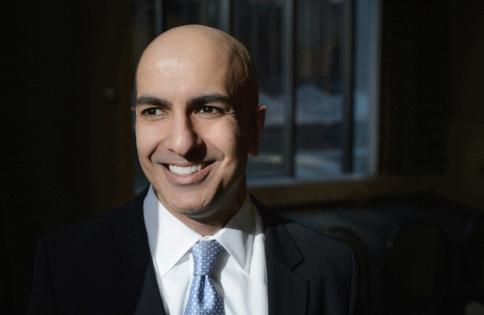Minneapolis Fed's Kashkari says interest rate conundrum makes 2024 uncertain
Published in Business News
The idea of a "new normal" became a post-pandemic cliche, but the president of the Federal Reserve Bank of Minneapolis thinks there might be economic proof of its truth.
After 11-consecutive interest rate hikes from March 2022 to July 2023, policymakers have kept rates at 5.25% to 5.5% since, including upholding that rate at a meeting of the Federal Open Market Committee (FOMC) earlier this month. All of this is in pursuit of 2% inflation, a goal that seemed in sight after a rapid decline at the end of last year. And yet inflation has stagnated, with the latest personal consumption expenditures price index, the Fed's preferred inflation measure, at 2.7%.
The has made Minneapolis Fed leader Neel Kashkari question if perhaps the ideal natural rate — or the neutral rate of interest theorized to keep job growth strong and inflation stable — has grown a percent since the pandemic to around 3%. As a result, the Fed might need to hold off on interest rate cuts that once seemed likely for the time being, Kashkari said Tuesday during a session at the global conference of nonpartisan think tank the Milken Institute.
High inflation typically signals the need for interest rate increases to tame it. A floundering economy, meanwhile, suggests interest rate cuts to stoke activity. The fact inflation has remained high but the economy is still chugging along, including a historically low unemployment rate and increase in residential investment compared to last year, presents a conundrum.
"Right now, it looks like the economy is in a very good place," Kashkari said during a Tuesday interview with New York Times reporter Jeanna Smialek. "Economic momentum is maintaining. There's a lot of resilience. It seems like things are kind of at a steady state. So if I had to pick a scenario today, it seems like we are going to kind of go sideways for a while. And under that scenario, that would lead me as a policymaker to say we ought to just sit with interest rates for longer than expected."
Kashkari, who was a voting member of the FOMC last year, said in March he thought the Fed might need to cut rates twice this year, but now his stance has wavered.
"It's possible I would stay at two. It's possible I would go to one or even zero," he said of potential cuts. "We need to look at the constellation of data."
Kashkari's musings are likely not the discussion investors and everyday consumers who are feeling budget constraints want to hear. Total household debt has been on the rise reaching $17.5 trillion in the fourth quarter of 2023, according to the Federal Reserve Bank of New York. The delinquency rate on auto loans and credit cards is higher than before the pandemic.
"We are facing a puzzling economic environment where the good news is we had rapid disinflation in the second half of last year, much faster than we had expected. ... We had much stronger economic growth than we had anticipated," Kashkari said at the conference. "Those two things are a little bit puzzling. You would think if monetary policy is bringing inflation down, it would also be restraining economic growth, but we didn't see that."
Thus his desire to stay put at the current rates to see if the disinflation will eventually continue or if it has really stalled. Or if that "new normal" is finally revealing itself. Per an essay Kashkari published Tuesday: "The question we now face is whether the disinflationary process is in fact still underway ... or if inflation is instead settling to around a 3% level."
The April jobs report released last week indicated there is some softening in the labor market with non-farm payrolls increasing by 175,000 jobs on the month, below estimates. The unemployment rate went up to 3.9% from 3.8%, but many still interpret the labor market as remaining fairly tight. Minnesota added about 11,000 jobs in March, thousands more than the same time the year before as well as better than in February.
In his essay, Kashkari explained residential investment has also grown 5% through the past year despite housing traditionally being especially sensitive to high interest rates. According to a Freddie Mac survey from last week, rates for the average 30-year fixed-rate mortgage were 7.17%. Still, builders in the Twin Cities received 40% more single-family home building permits than last year at this time.
"Given that housing is a key channel through which monetary policy affects the economy, its resilience raises questions about whether policymakers and the market are misperceiving neutral, at least in the near term," Kashkari said, adding once the economy fully stabilizes from the pandemic effects, the pre-pandemic low-rate environment could return and bring the neutral interest rate down with it. "But the FOMC must set policy based on where neutral is in the short run to achieve our dual mandate goals in a reasonable period of time.
"The uncertainty about where neutral is today creates a challenge for policymakers."
©2024 StarTribune. Visit at startribune.com. Distributed by Tribune Content Agency, LLC.







Comments